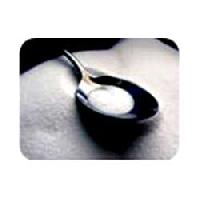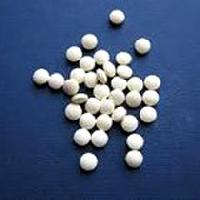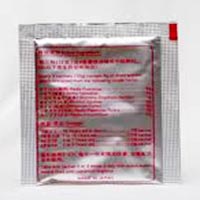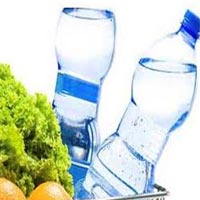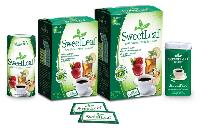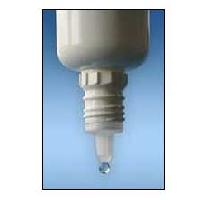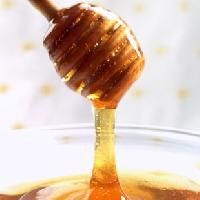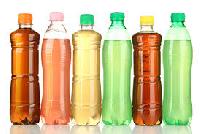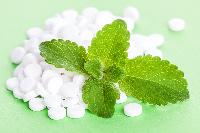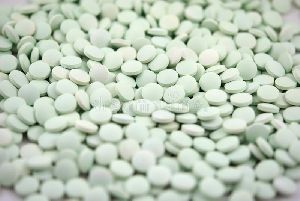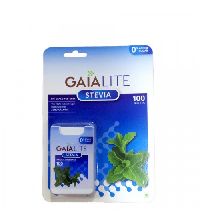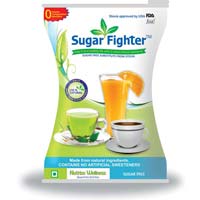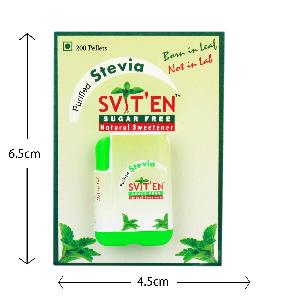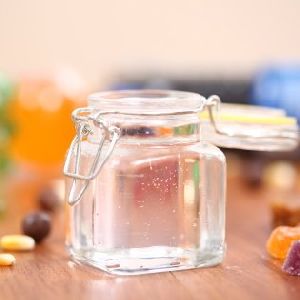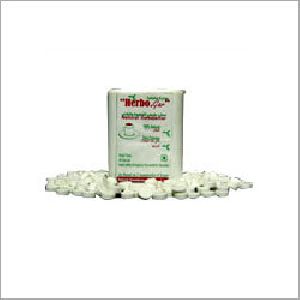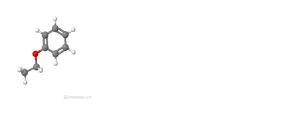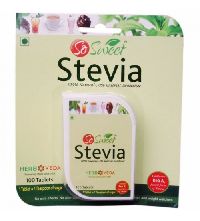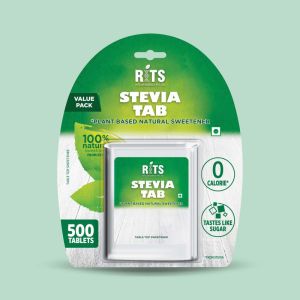We offer Sweetener Tablets that are completely calorie free. Our Sweetener Tablets are processed with the use of specialized technique and are used to add natural sweetness to the beverages. Overview Being health-conscious does not have to mean eschewing all artificial sweeteners. Stevia is an artificial sweetener that can be used in place of sugar or saccharine substitutes and has beneficial health properties. It has been approved by the Food and Drug Administration, or FDA, Individuals on any medication should consult a health care provider prior to consuming stevia to avoid any doubt they have in their mind. History The Stevia rebuadiana plant originated in Paraguay and has leaves that have been used for centuries as a natural sweetener by the Guarani Indians. Europeans discovered the stevia plant in the 16th century, according to Drugs.com. The chemicals that cause the plant's sweetness, called glycosides, were discovered in 1931, and at the end of 2008, the FDA approved the glycoside called rebaudioside A for use as a commercial sweetener. One Tablet = One teaspoon of sugar! Stevia Tabs TM Stevia extract will dissolve in hot or cold liquids, adding quality nutrition with an intensely sweet flavor without sugar or artificial sweeteners. It's calorie-free and safe for diabetics and hypoglycemic. One SweetLeaf TM Stevia Tab TM Stevia extract tablet is as sweet as a teaspoon of sugar. 1 tab = 1 tsp of sugar Suggested Use : Dissolve 1-2 tablets in a hot or cold beverage Ingredients Lactose Stevia Extract (Standardized to a minimum of 80% Steviosides) Stevia is a natural herb native to Paraguay that is 30 times sweeter than sugar. It has been used for centuries in South America to enhance medicinal remedies. Stevia Tabs FAQs Q. : If I am gluten intolerant, will the lactose in your Stevia Tabs harm me? What if I am Lactose intolerant? Ans. : Lactose is considered to be a "safe" gluten free product and is safe for people with gluten intolerance (Celiac Disease). The amount of lactose in each serving of Stevia Tabs is less than 25 mg and therefore should not have an adverse affect on a lactose intolerant person either. An 8 oz glass of milk contains 11 g (11, 000 mg) of lactose or 440 times lactose than in one Stevia Tab. However, people with allergies, intolerances or concerns about gluten or lactose should consult their health care professionals prior to using any product that may have gluten, lactose or gluten and lactose byproducts. Q. : Where does the starch in your Stevia Tabs come from? If I have celiac Disease (gluten intolerant) will this starch be harmful to me? Ans. : The starch used in the Stevia Tabs is made from corm. Each tablet has a total weight of 100 mg and less than 8 of those are starch. Corn should not be problem to people with gluten intolerance. However, people with allergies, intolerances or concerns about gluten should consult their health care professional prior to using any product that may have gluten or gluten by products. Function In addition to its use as a sweetener, stevia has numerous other health benefits. The sweetener helps regulate blood sugars and lowers blood pressure, and can even reduce cravings for sweet and fatty foods. After taking 10 to 15 drops of stevia 20 minutes before a meal, feelings of hunger and food cravings have been shown to be reduced. Side Effects Although generally some, individuals with allergies may want to consult a health care practitioner before using stevia, especially individuals allergic to certain plants or flowers. Warning Women who are breastfeeding or who are pregnant and individuals taking medications such as lithium, diabetes medications and drugs for high blood pressure should check with their health care providers before consuming stevia, as this sweetener may interact with some of the medications may cause adverse side effects. Clinical Data Studies with rebaudioside indicate no effect on blood glucose. A 16-week study in patients (n = 122) with type 2 diabetes did not find any statistically significant changes from baseline versus placebo in hemoglobin A 1c (HbA 1c)1 fasting glucose, insulin , or C-peptide when patients were administered rebaudioside A 500 mg twice a day with meals for 16 weeks. 22 Another study supports this lack of pharmacological effect of steviol glycosides. This study included 72 patients divided into 3 groups consisting of patients with type 1 diabetes, with type 2 diabetes, or without diabetes, after 3 months of the patients receiving steviol glycosides 250g, 3 times a day, no change in HbA 1c was observed. 23 Commercially available rebaudioside A has not been shown to affect blood glucose; however, earlier studies, some conducted with the stevioside glycoside, indicate a potential effect on blood glucose. Aqueous extracts of the plant increased glucose tolerance in 16 healthy volunteers, as well as markedly decreasing plasma glucose levels. 24 When given 1 g capsules (consisting of 91% Stevioside) orally along with a meal, postprandial blood glucose was decreased in a crossover study of 12 patients with type 2 diabetes. 25 Surrey, United Kingdom � The global market for natural sweeteners, also known as high-intensity sweeteners, grew by more than 21% in value terms between 2007 and 2009, according to �The Global Market for Intense Sweeteners" released this month by Leatherhead Food Research, Surry. Stevia. Stevia-based sweeteners led the charge, rising from 1% of the world market for intense sweeteners in value terms in 2007 to 14% in 2009. The global market for intense sweeteners in 2009 came in at more than $1.49 billion in value terms. Market volume was worth an estimated 86 million tones. Stevia's market share increased mainly at the expense of aspartame and sucralose, according to the report. The United States accounted for 84% of stevia's global market in 2009. As far as the future is concerned, some industry sources feel that the stevia market has the potential to reach a value of up to $700 million within the next four to five years, with some of the opinion that somewhere in the region of $2 billion is a more realistic figure. Stevia or Reb A, the sweetener derived from the Stevia plant, may fill a need in the food and beverage market. Consumer concerns regarding obesity and the growing demand for all-natural products bode well for Reb A to quickly gain market share, however, while success seems imminent and we expect annual sales of Reb a to reach approximately $700 million within 5 years, numerous hurdles must still be overcome. The challenges include the fact individuals tastes may vary substantially and some consumer claim to detect a bitter or licorice aftertaste. In addition, it does not provide enough sweetness for some soft drinks and may not be combined with other non-caloric sweeteners to reach full sweetness and still maintain the all-natural claim. Stevia or Reb A, the sweetener derived from the Stevia plant, may fill a need in the food and beverage market. Consumer concerns, regarding obesity and the growing demand for all-natural products bode well for Reb A to quickly gain market share, However, while success seems imminent and we expect annual sales of Reb A to reach approximately $700 million within 5 years, numerous hurdles must still be overcome." The challenges include the fact individual tastes may vary substantially and some consumers claim to detect a bitter or licorice aftertaste. In addition, it does not provide enough sweetness for some soft drinks and may not be combined with other non-caloric sweeteners to reach full sweetness and still maintain the all-natural claim. Pricing is another challenge as Reb A costs more than other mainstream sweeteners because demand is still being established and production lacks efficiencies of scale. In addition, the European Union is in the process of approving Reb A as a food ingredient, and this may cause more pressure on pricing. Yet there are numerous advantages to stevia. It is heat, light and ph stable and may be used in applications where other sweeteners may not. Most importantly, because stevia-based sweeteners are plant derived and naturally occurring they can be incorporated into products with all � natural claims, and to date no other commercially available high-intensity sweetener can fill this gap. Uses Food and Culinary Uses Table top sweetener-for tea, coffee, etc Soft drinks, cordials, fruit juices Ice-creams, yoghurts, sherbets Cakes, biscuits Pastries, pie, baking Jams, sauces, pickles Chewing gum Candies, confectionaries Sea-foods, vegetables Weight-watcher diets Diabetic diets Flavor, color and odor enhancers A source of antioxidants Alcoholic beverage enhancer (aging agent and catalyst) Medicinal Uses Plaque retardant/prevents caries Skin care-eczema and acne control, rapid healing agent Diabetic foods and weight loss programs Hypertension treatment and blood pressure control Calcium antagonist Bactericidal agent Pill and capsule additive to improve taste Other Uses additive and flavoring agent Production of plant growth regulators (potential use)
